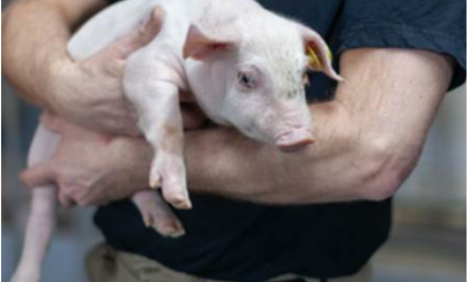



Assessing Risk Profiles for Salmonella Serotypes in Breeding Pig Operations in Portugal
New research from Portugal reveals that the prevalence of herds with breeding pigs that had at least one sample positive to serotype Typhimurium or S. Typhimurium-like strains with the antigenic formula: 1,4,5,12:i: was 13.8 per cent, and for the other serotypes, prevalence was 31.7 per cent. The risk factors for Typhimurium suggest a contagious pattern and the risk factors for other serotypes appear were more closely related to environmental factors.EU Regulation No 2160/2003 imposes a reduction in the prevalence of Salmonella in pigs. The efficiency of control programmes for Salmonella in pigs, reported among the EU Member States, varies and definitive eradication seems very difficult. Control measures currently recommended for Salmonella are not serotype-specific. In a paper published recently in BMC Veterinary Research, Carla Correia-Gomes at the University of Oporto in Portugal and co-authors there and the UK's University of Exeter and at UTAD in Vila Real explored the question: is it possible that the risk factors for different Salmonella serotypes are different?
The aim of their study was to investigate potential risk factors for two groups of Salmonella sp. serotypes using pen faecal samples from breeding pig holdings representative of the Portuguese pig sector.
The data used come from the Baseline Survey for the Prevalence of Salmonella in breeding pigs in Portugal. A total of 1,670 pen faecal samples from 167 herds were tested, and 170 samples were positive for Salmonella. The presence of Salmonella in each sample (outcome variable) was classified in three categories: i) no Salmonella, ii) Salmonella Typhimurium or S. Typhimurium-like strains with the antigenic formula: 1,4,5,12:i:-, and iii) other serotypes.
Along with the sample collection, a questionnaire concerning herd management and potential risk factors was used. The data have a 'natural' hierarchical structure so a categorical multi-level analysis of the dataset was carried out using a Bayesian hierarchical model. The model was estimated using Markov Chain Monte Carlo methods, implemented in the software WinBUGS.
The significant associations found (when compared to category 'no Salmonella'), for category 'serotype Typhimurium or S. Typhimurium-like strains with the antigenic formula: 1,4,5,12:i:-' were: age of breeding sows, size of the herd, number of pigs/pen and source of semen. For the category 'other serotypes', the significant associations found were: control of rodents, region of the country, source of semen, breeding sector room and source of feed.
The risk factors significantly associated with Salmonella shedding from the category 'serotype Typhimurium or serotype 1,4,5,12:i:-' were more related to animal factors, whereas those associated with 'other serotypes' were more related to environmental factors.
Correia-Gomes and co-authors conclude their findings suggest that different control measures could be used to control different Salmonella serotypes in breeding pigs.
Reference
Correia-Gomes C., T. Economou, D. Mendonça, M. Vieira-Pinto and J. Niza-Ribeiro. 2012. Assessing risk profiles for Salmonella serotypes in breeding pig operations in Portugal using a Bayesian hierarchical model. BMC Veterinary Research, 8:226. doi:10.1186/1746-6148-8-226
Further ReadingYou can view the full report by clicking here. |
December 2012








